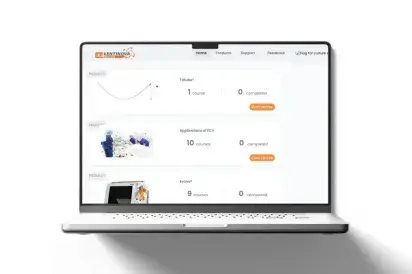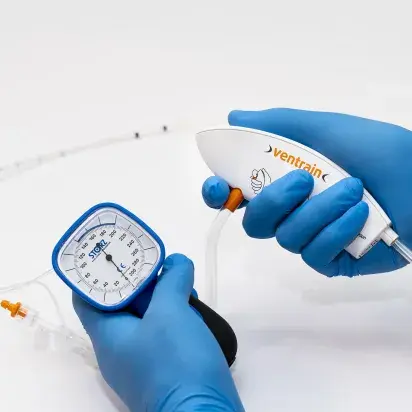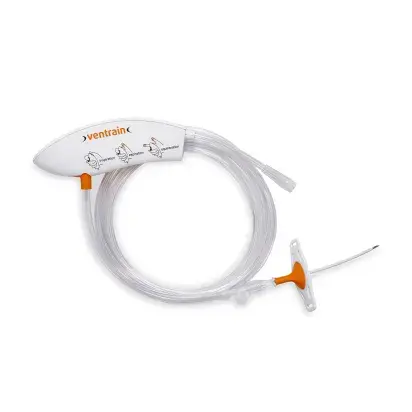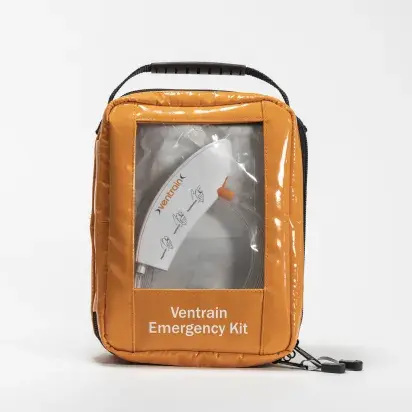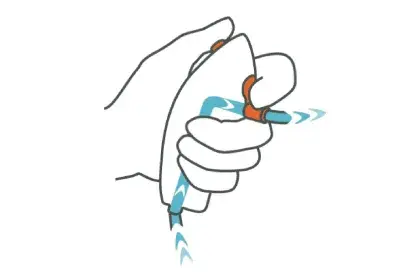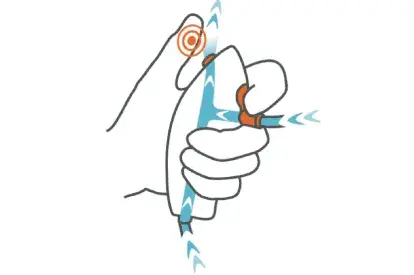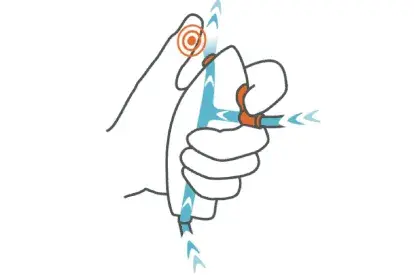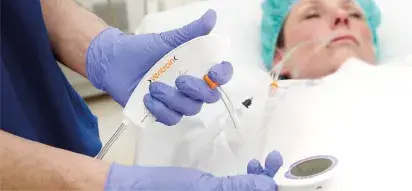
Flow Controlled Ventilation (FCV)
Ventrain®
Conventional ventilation relies on relatively high flow rates to achieve effective gas exchange in the lungs, while jet ventilation depends on high inspiratory pressures.
The EVA technology integrated in Ventrain enables active inspiration and expiration through suction via a catheter with a 2 mm internal diameter (ID).
Features:
- Manual control of ventilation flow
- Oxygenation and CO₂ elimination
- No vibration of the vocal cords
- Minimally invasive
- Improved visualization during surgery
- Enhances the surgical field
- Optional Cricath® catheter, 2 mm
| Internal Diameter | 2 mm |
| Technology | EVA® |
| Flow Rate | 7 l/min |
How does Ventrain® work?
Indications for Use of Ventrain®
1. Emergencies (Cannot intubate, cannot ventilate)
When immediate airway access is required using a cricothyroidotomy technique.
Ventrain®, in combination with the Cricath® Transtracheal Catheter, is the first and only emergency ventilation device on the market that provides full ventilation through a 2 mm internal diameter catheter inserted via the cricothyroid membrane.
2. Upper Airway Surgery
During upper airway surgery, clinicians may encounter a difficult airway or even a sudden airway obstruction.
Ventrain® can be connected to either a small-bore endotracheal or transtracheal catheter, providing complete ventilation across a wide range of clinical situations.
Ventilation with Ventrain® during upper airway surgery combines the physical advantages of using a small-bore catheter with the functional benefits of the Ventrain® ventilation system.

3. Non-dependent Lung Ventilation
The surgeon requires an optimal surgical field to perform an effective procedure.
Single-lung isolation techniques have been developed to improve this critical working space by collapsing one lung while ventilating the other.
Complications associated with this technique include an increased risk of hypoxemia due to ventilation-perfusion mismatch and oxygen dissociation from hemoglobin (Bohr effect). Oxygenation of the collapsed lung may require the application of continuous positive airway pressure (CPAP). However, this is not always sufficient and may lead to unintended re-expansion of the lung.
Additionally, using EVA® ventilation enables faster and more effective collapse of the non-dependent lung, maintaining it throughout the surgical procedure and preventing delays or prolongation of surgery.

New Training Platform
Discover our free learning platform, where you can explore FCV® technology in depth, learn about innovative products in Flow-Controlled Ventilation, and access courses, exclusive webinars, and official certifications.
- Learn how to use Evone®, Cricath®, Ventrain®, and Tritube®
- Discover the clinical applications of FCV®
- Step-by-step guided modules
- Practical webinars
- Final assessment with official certificate
Register today! It’s free, quick, and very easy to use.
